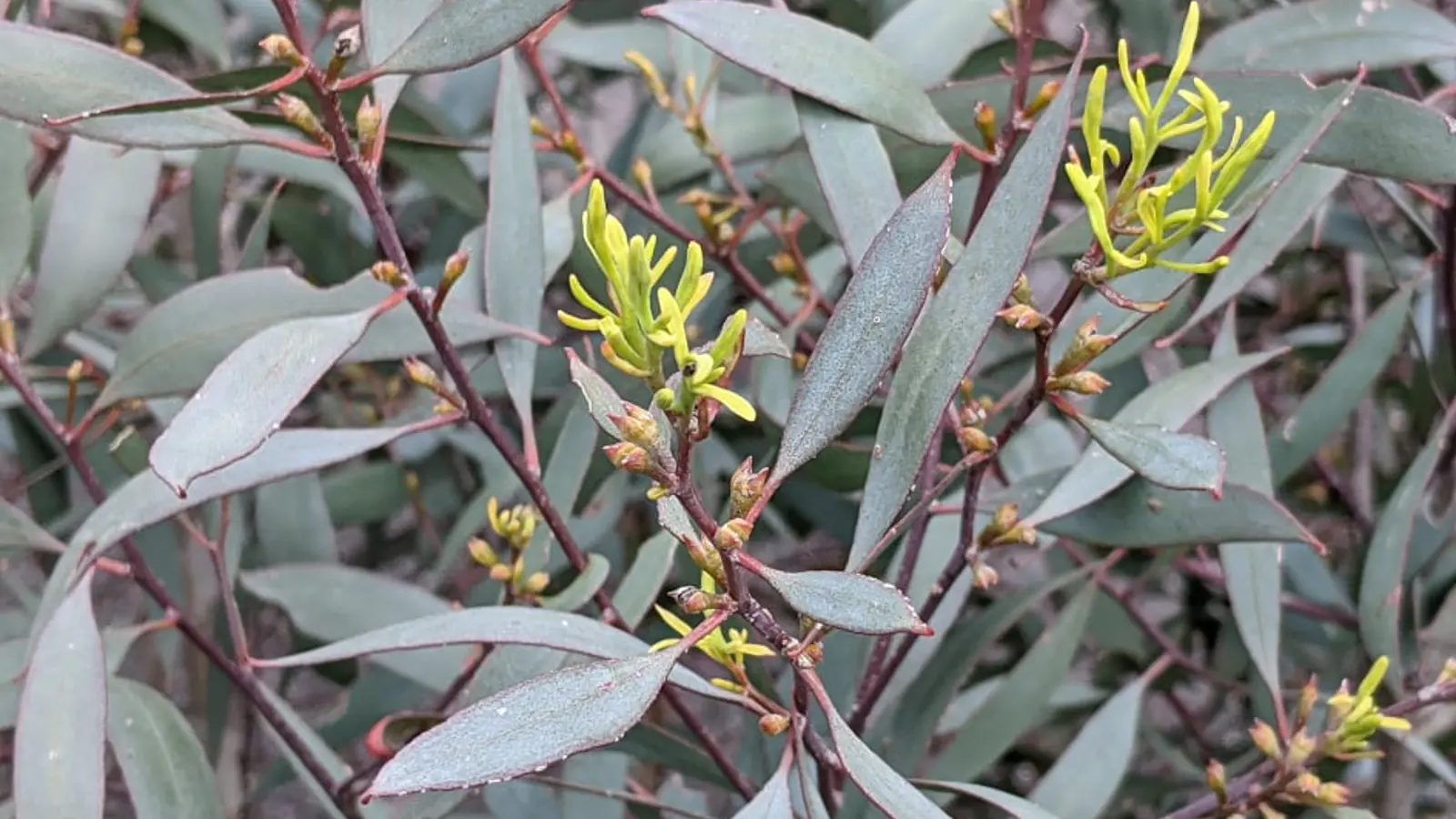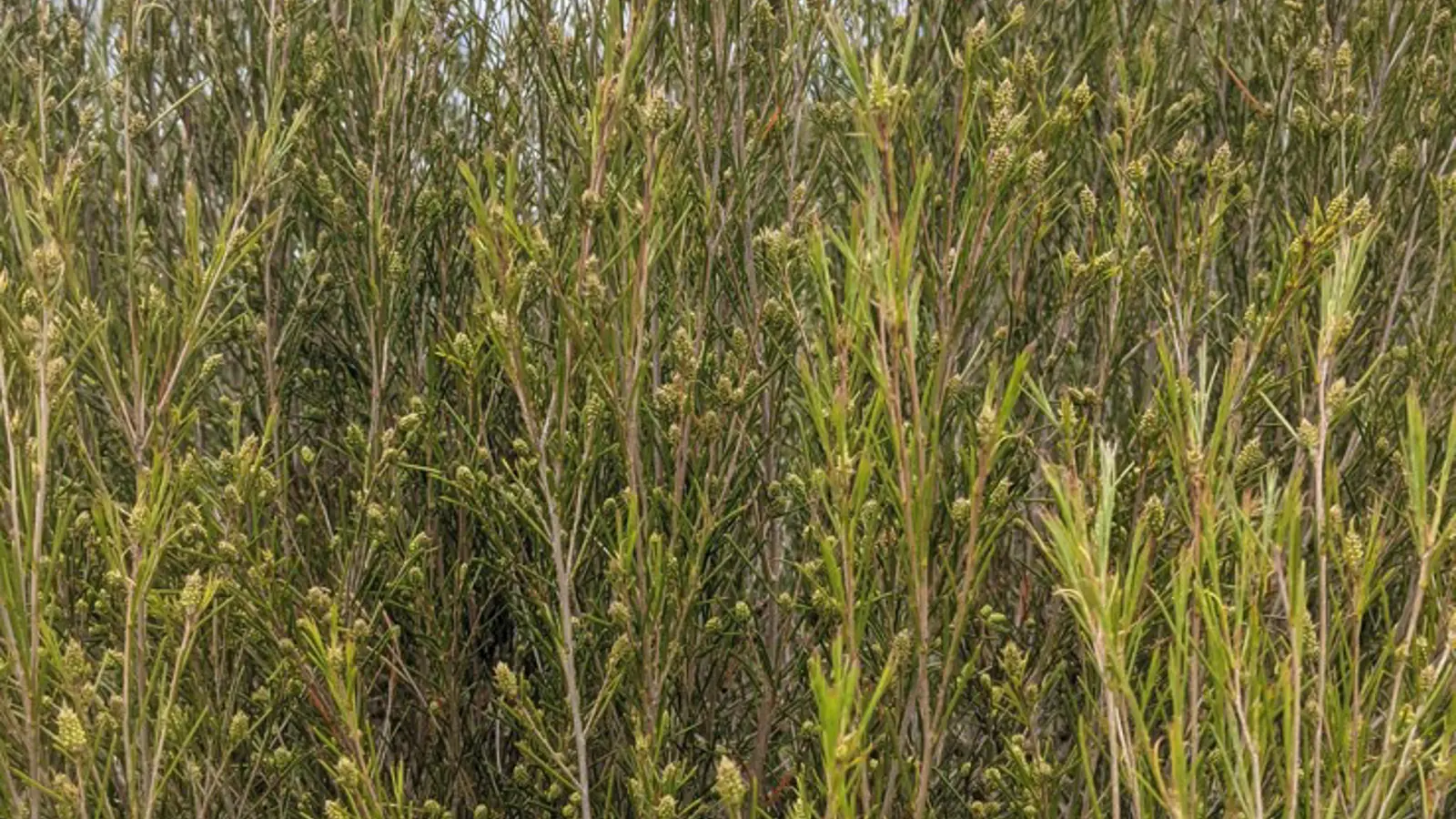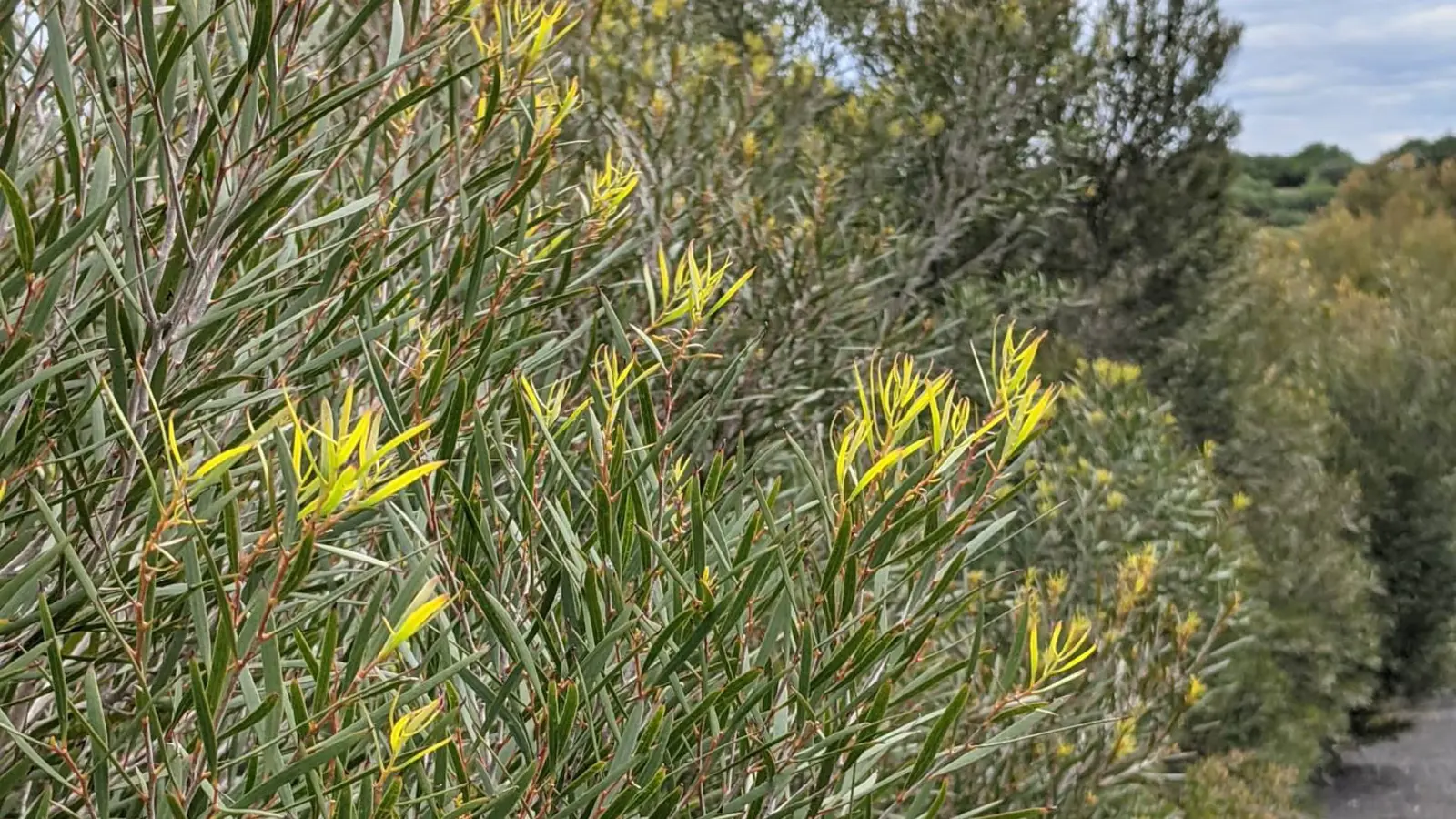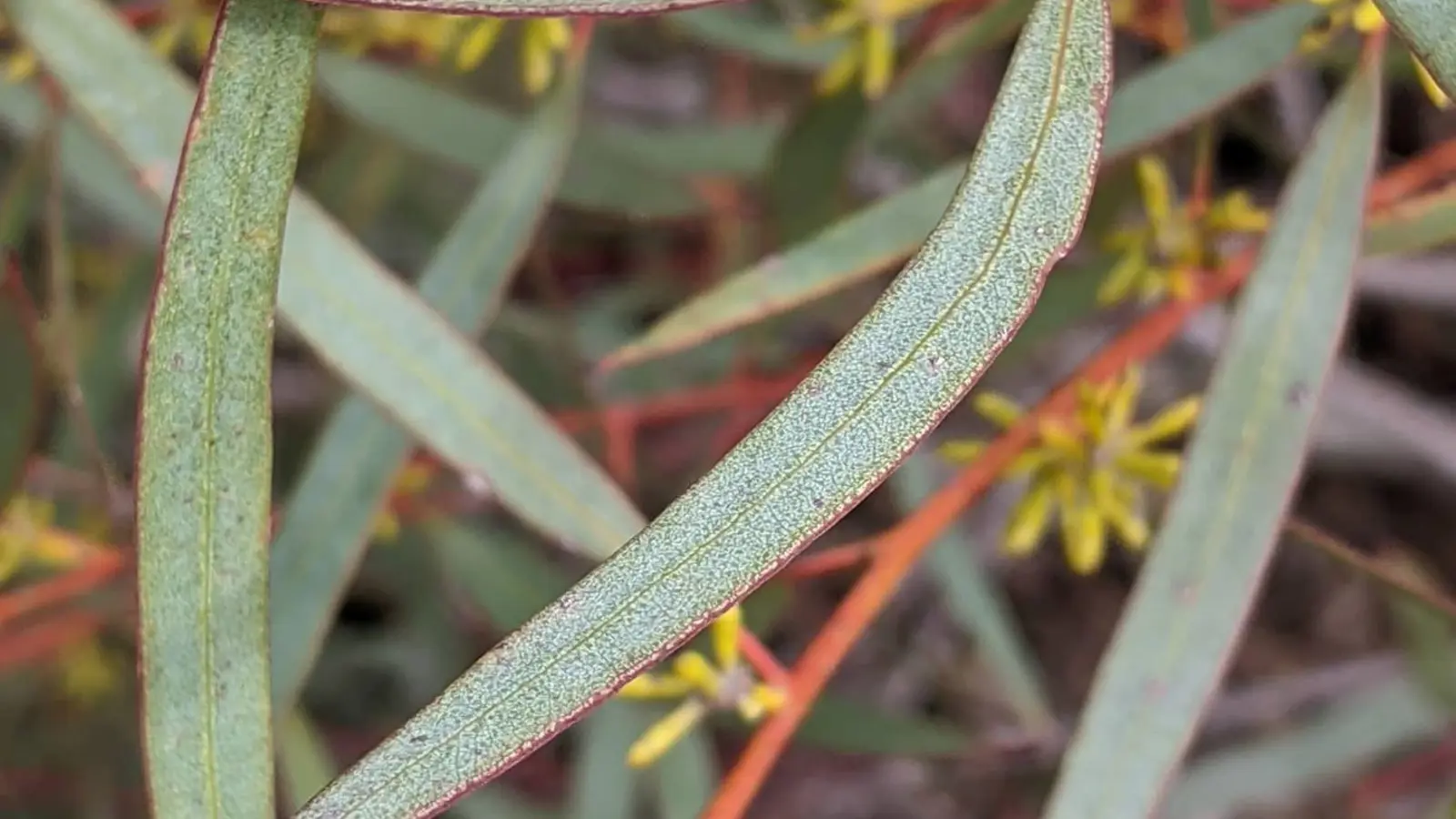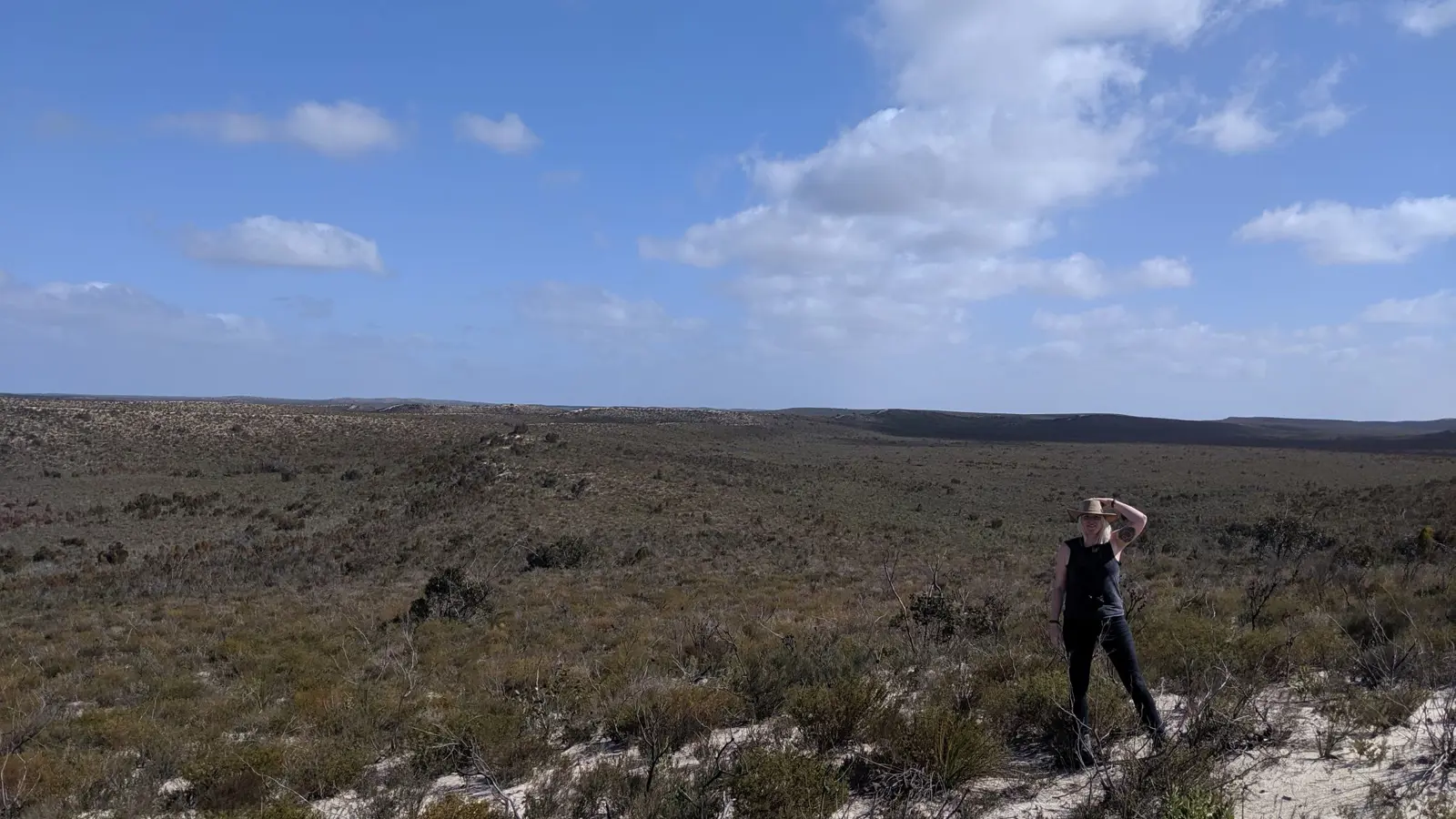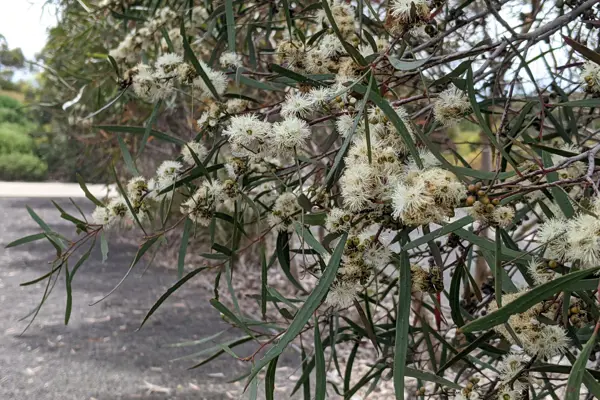
Woodlots
The Woodlots line the pathway up to Howson Hill and are a change in landscape from the naturalistic inspired plant displays to man-made rows of monoculture planting, signifying the clearing of mallee country by European settlers to make way for agriculture. Here you will find avenues of several mallee species most often used for oil and timber production, where they are routinely coppiced to maintain a low canopy of fresh growth and emulate the appearance of recently harvested woodlots.
Some historical facts about the Woodlots:
- Mallee land was sold for a penny per acre, due to the landscape being deemed a 'howling wilderness' unsuitable for farming.
- The Stump Jump Plough, introduced in the 1880s, allowed land to be farmed without blades breaking on the woody lignotubers left in the soil.
- 1924 - 1934 saw the Better Farming Train tour regional Victoria as an ‘agricultural college on wheels’, teaching farming techniques to returned soldiers recently settled there.
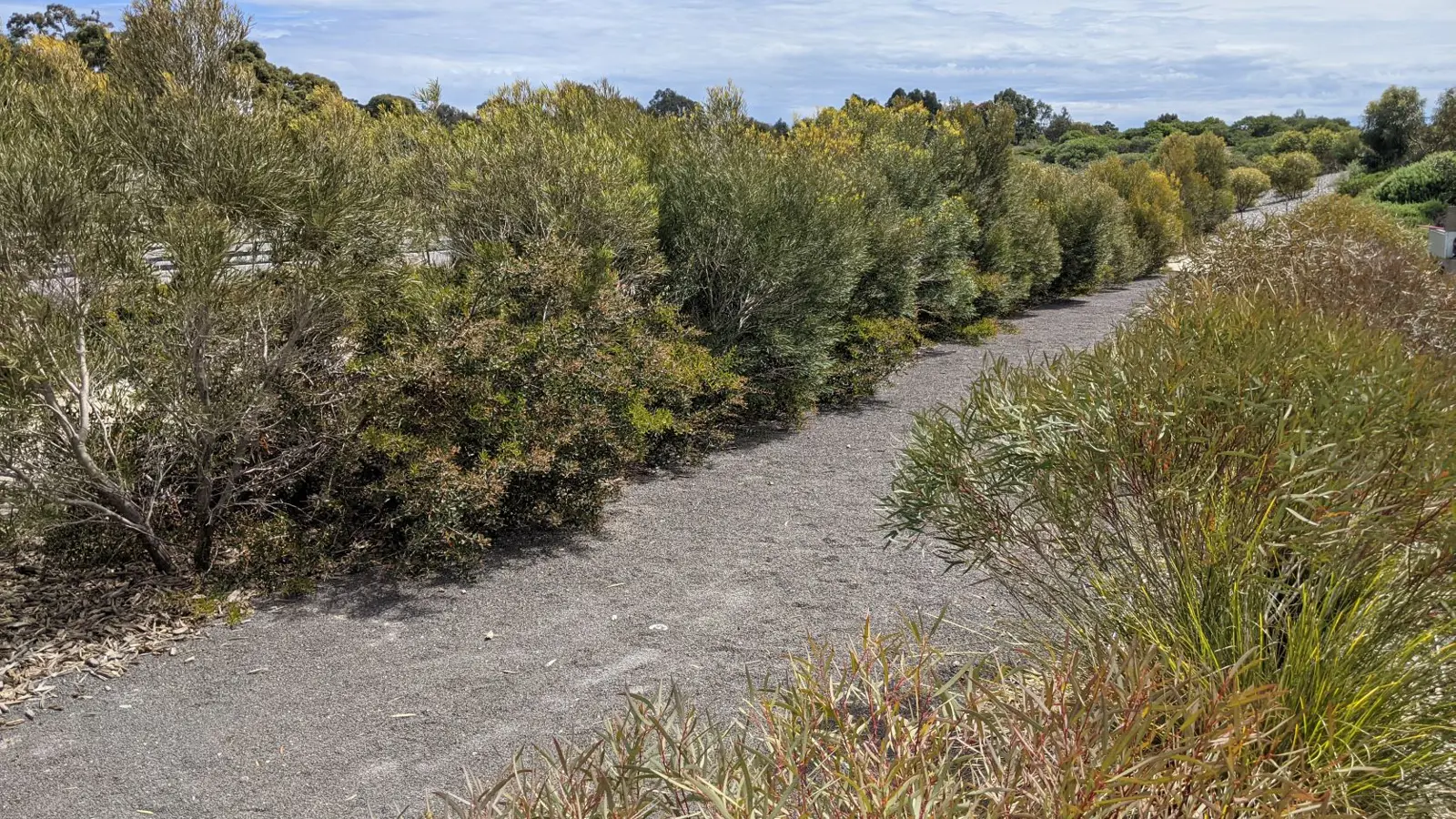
Notes from the Curator
Marie Velthoven
The Woodlots is an unassuming display at first glance, but upon closer inspection it is a little slice of history, telling the story of how regions once considered too arid and untameable for farming, have successfully been used for industry. Alongside the scrub-roller, an 1800s agricultural invention, you can also witness more modern innovations. Selective breeding methods employed by Bosisto’s and University of Melbourne, produced a form of Eucalyptus polybractea that has increased cineole content, doubling the usual oil yield of its leaves. This has had flow-on environmental benefits, as empty land once cleared by the aforementioned scrub-roller, is now being revegetated using E. polybractea.

